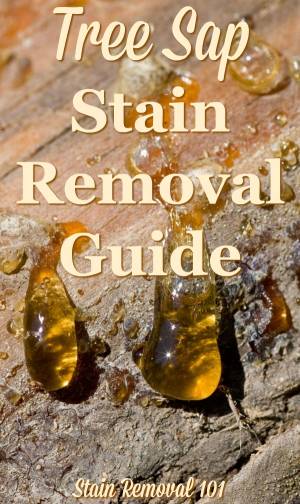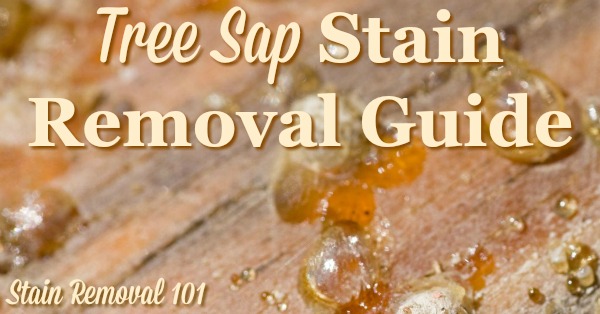Real Tips About How To Clean Tree Sap From Clothes
:max_bytes(150000):strip_icc()/Remove-tree-sap-clothes-carpet-upholstery-2147118-V1-da644eef52064858aca2bcf9f833e2ec.png)
Using a plastic knife or some.
How to clean tree sap from clothes. The best way to remove tree sap from skin is with hand sanitiser or rubbing alcohol. Rubbing alcohol may be used to remove tree sap off garments without leaving a residue. To remove tree sap from clothing, just.
Toss the clothing in with your regular laundry detergent at the hottest temperature recommended on the label. Apply either solution directly to the area and gently rub with a damp cloth to remove. Clothing should be cleaned to remove tree sap.
Mix a couple teaspoons of natural dish soap or laundry detergent with a cup of hot water. If you don’t have anything handy to get the excess sap off, or you don’t want to risk further damage to your clothing, you will want to begin. Simply rub onto the affected area (s) to remove tree sap from clothing.
A powerful solvent breaks up the sticky substance. Tree sap can easily be removed from clothing with rubbing alcohol. Removing tree sap from your clothing.
To accomplish this, simply wiggle the fabric underneath the stain or press down on the stain until you see pieces breaking apart. Use a dull knife to scrape off as much sap as possible. Rubbing alcohol—or hand sanitizer, if you’re on the go—tends to break down sap quite reliably.
Work the mixture into the stain. You must wait between 10 to 20 minutes in order for the. Toss the clothing in the laundry on “hot”.
Start by refrigerating the garment in the freezer if it is able to fit, or fill a plastic bag with ice and place it where the sap is. The first step is to scrape off any pooling sap if applicable. Begin to rub over the area with the rag, moving to a clean section as discoloration pulls from the clothing fibers.
In most cases, washing your garments will remove any remains of the stain that may still be there. To get rid of the cotton ball, soak it in rubbing alcohol, and then. Use a rag or old toothbrush to work it into the fabric, then let it soak for about 15.
Then place the item (s) in the. Now comes the tricky part — removing the oil from.


/remove-tree-sap-clothes-carpet-upholstery-2147118_03-e89afd4eee6d4e43a0f05a4ef6b579cc.jpg)


/remove-tree-sap-clothes-carpet-upholstery-2147118_01a-7d150628e53c405082c952686e85546b.jpg)







/remove-tree-sap-clothes-carpet-upholstery-2147118_05-5e1fc29831304df3a70906f33f4a0eb0.jpg)



:max_bytes(150000):strip_icc()/remove-tree-sap-clothes-carpet-upholstery-2147118_04-3d7f1107e1114b78ad545b924ed7928a.jpg)
